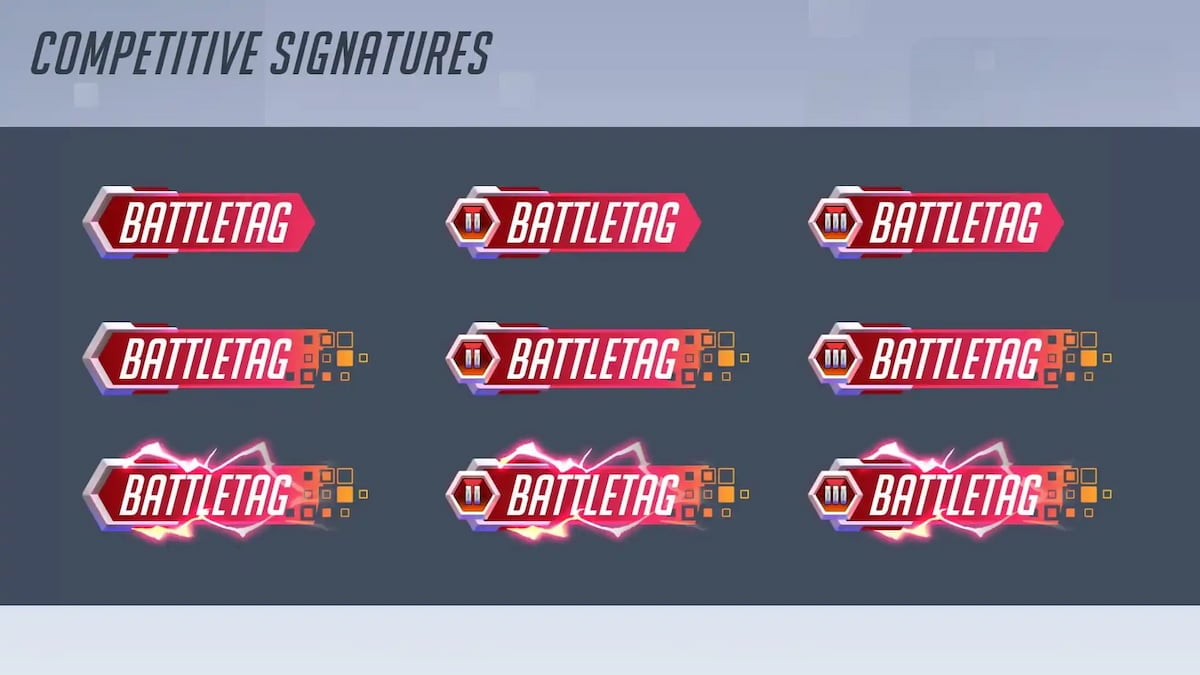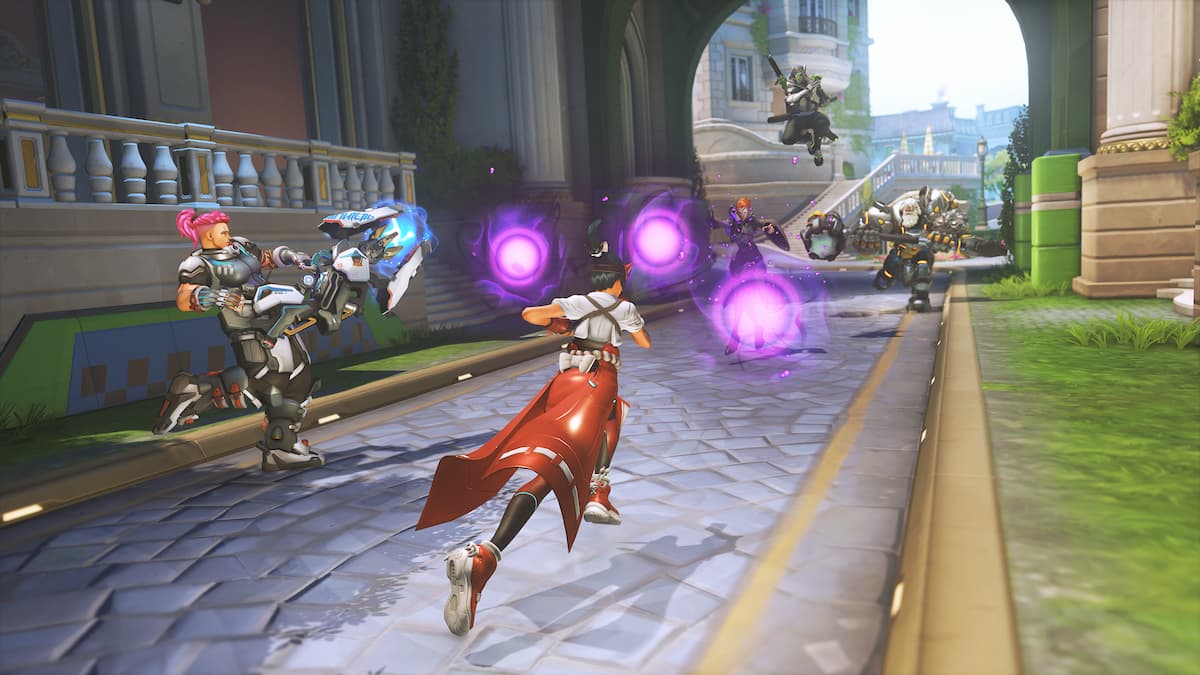If you’ve been playing Overwatch 2 and are yearning to try out competitive play, then you should consider investing some time in the Ranked game mode. This mode is made for players who always want to communicate with their team and try their hardest to win.
Following the massive ranked overhaul during OW2′s ninth season, there are many factors that determine what rank you’re placed into, how you can increase your rank, and the ranked rewards you’ll earn. To make things easier to understand, here is everything you need to know about the rank system in Overwatch 2.
Table of contents
All Overwatch 2 ranks in order from lowest to highest

There are a total of nine ranks in OW2, with Bronze being the lowest and Champion the highest. All of these ranks are further split into five subdivisions that indicate your skill level within each rank. Here is a table that details all the Overwatch 2 ranks and their subdivisions:
| Rank | Lowest Tier | Highest Tier |
|---|---|---|
| Bronze | Five | One |
| Silver | Five | One |
| Gold | Five | One |
| Platinum | Five | One |
| Diamond | Five | One |
| Master | Five | One |
| Grandmaster | Five | One |
| Champion | Five | One |
| Top 500 | N/A | N/A |
When you first start ranked, you’ll play 10 matches that determine your placement on the ranked scale. As you continue to win or lose games, you’ll earn Ranked Progress after each match that changes your placement within divisions and skill tiers. For example, a Bronze Two player who performs well and ranks up would rise to Bronze One. If they rank up again, they will rise to Silver Five, starting the countdown again in this new skill tier.
Since there are three different roles within OW2, you can earn different rankings for Tank, DPS, and Support. This means that your Support rank could be Grandmaster, while your Tank rank is only Bronze. Your rank will reset twice per year, but you’ll still have to do placement matches after each ranked season.
What does Top 500 mean in Overwatch 2?
While Top 500 is included on the table, this specific tier functions differently than all other ranked tiers. Top 500 is more like a title than a rank, and it designates the best 500 players in your specific region.
Typically, this tier includes players in the Grandmaster and Champion tiers, as these are the best of the best. Rankings among the Top 500 players are typically updated every day and are extremely competitive.
How to rank up in Overwatch 2

To put it simply, if you want to rank up in OW2 then you’ll have to win your ranked games. While you can’t guarantee a victory after every match, there are some tips you can follow to become a better player and teammate.
Play with friends
Ranked games become significantly easier when you have people you can depend on. If you and your friends happen to be in similar skill levels, then we suggest queuing up with them.
Playing with people you already know means that you’re more likely to communicate with them, thus increasing your team’s overall chances of success. Keep in mind that if you and your friends have drastically different ranks, you can still play together at the risk of gaining less Rank Progress.
Communicate with your team
Using the ping system to mark the location of enemies will drastically increase the coordination of your team. For even better results, you can purchase a microphone or headset to communicate with your teammates directly.
This allows you to make shot calls in real-time, so your team knows when to push an objective or pull back and wait for support. While using your voice may be daunting at first, OW2 has strong guidelines and you can always report players for voice chat misconduct.
Practice makes perfect

Certain characters in OW2 require you to have good aim, so practicing your skills will never hurt. You can use the practice range to test out your aim against bots, or use aim-training programs to increase your expertise.
Some characters are more ability-focused, so learning and mastering their specific combos will also increase your chances of winning fights and games.
Learn to walk away
Sometimes, it’s better to step away from ranked and play some quick matches, or even an entirely different game. If you find yourself on a significant loss streak, your mental outlook on ranked can turn sour quickly, thus negatively impacting how you play your matches.
By only playing a couple of games a day or walking away after several losses, your rank won’t plummet after difficult matches.
What are Rank Modifiers in Overwatch 2?

As if gaining and losing Rank Progress wasn’t hard enough, you’ll also have to contend with different Rank Modifiers after every ranked match. These modifiers directly affect the amount of progress you gain or lose, so it is important to understand what each status entails.
Here is a full breakdown of all the Rank Modifiers in OW2:
| Modifier | Explanation |
|---|---|
| Win Streak (Positive) | Bonus for winning many games in a row. |
| Loss Streak (Negative) | Penalty for losing many games in a row. |
| Calibration (Positive or Negative) | Your rank is still uncertain. You may see drastic gains or losses in Rank Progress. |
| Uphill Battle (Positive) | You weren’t favored, but you won the game. |
| Reversal (Negative) | You were favored to win, but you lost. |
| Volatile (Negative) | You lost your calibration matches after ranking up. |
| Consolation (Positive) | You were favored to lose, and you lost. |
| Expected (Negative) | You were favored to win, and you won. |
| Demotion (Negative) | You lost your match while in Demotion Protection. |
| Demotion Protection (Positive) | Losing the next match will not change your rank. |
| Wide (Positive or Negative) | Your group is considered wide, so you gain or lose less rank. |
| Pressure (Positive or Negative) | You gain less progress at the top of the ranked ladder and more at the bottom tiers. |
All of these Rank Modifiers last for different amounts of time, depending on what triggers the specific effects. For example, win or loss streak modifiers last until the streak is broken, while reversal or expected modifiers are only applied to a singular match.
It’s fruitless to seek out specific modifiers while climbing the ranked ladder, but it’s important to know how this system works if you want to calculate how much progress you’ll gain or lose.
Rank Grouping Restrictions in Overwatch 2

There are no longer any grouping restrictions in the ranked gamemode, which means that players from any ranked tier can play together. However, if your group has a large skill and rank disparity, everyone in the party will earn less Rank Progress after winning games. This prevents players in lower-tier levels from getting carried to higher-skill tiers.
These ranked groups are also classified into two different categories: narrow and wide. Wide groups are made up of five players, and can only be queued into other wide groups. On the other hand, narrow groups are made up of two to three players and only queued against other narrow groups or solo players.
All Overwatch 2 Ranked Rewards

While playing ranked games, you may notice you earn a unique currency after winning or drawing matches. These are called Competitive Points and are used to unlock various gun recolors. These points will be automatically converted to Legacy Competitive Points at the end of every year just before a new ranked season starts.
Currently, you can spend 3,000 Competitive Points or Legacy Competitive Points to purchase any Jade or Golden weapon skin. However, you can’t use a mixture of these two currencies to purchase a weapon recolor. While nothing is confirmed, Blizzard may add a new recolor at the start of next year.
Here is a breakdown of the Competitive Points you’ll earn while playing ranked:
- Win:15 CP
- Draw: Five CP
- Reach Bronze: 65 CP
- Reach Silver: 125 CP
- Reach Gold: 250 CP
- Reach Platinum: 500 CP
- Reach Diamond: 750 CP
- Reach Master: 1,200 CP
- Reach Grandmaster: 1,750 CP
- Reach Champion: 1,750 CP
There are also two other rewards you earn while playing the competitive gamemode.
Competitive Titles

On top of purchasing weapon recolors, you can unlock titles after the end of each season. These titles commemorate the rank peak you hit in the current season, but you’ll have to reach the Gold tier at least. Once the following season ends, your rank title will be updated. Here is a table of all the rank titles you can earn in OW2:
| Tank Role Titles | Damage Role Titles | Support Role Titles | Open Challenger Titles |
|---|---|---|---|
| Gold Tank | Gold Damage | Gold Support | Gold Open Challenger |
| Platinum Tank | Platinum Damage | Platinum Support | Platinum Open Challenger |
| Diamond Tank | Diamond Damage | Diamond Support | Diamond Open Challenger |
| Master Tank | Master Damage | Master Support | Master Open Challenger |
| Grandmaster Tank | Grandmaster Damage | Grandmaster Support | Grandmaster Open Challenger |
| Top 500 Tank | Top 500 Damage | Top 500 Support | N/A |
| Champion Tank | Champion Damage | Champion Support | Champion Open Challenger |
There are also three extra titles you can earn by completing a large amount of games. These titles are:
- Adept Competitor: Play 250 games
- Seasoned Competitor: Play 750 games
- Expert Competitor: Play 1750 games
Competitive Signatures

The newest addition to competitive rewards is an event called Competitive Drive, which nets you a unique Battletag display while you load into matches. Competing in these events will earn Competitive Drive, which directly upgrades your Competitive Signature.
This cosmetic will last until the next Competitive Drive event, which will likely occur right before a new ranked season begins.












Published: Oct 24, 2024 03:30 am